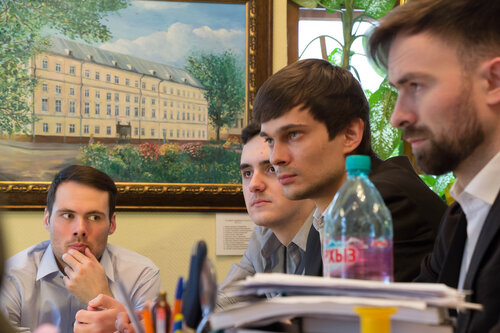The fact that we study the 20th century, as a historic part of the mankind, through the literature and cinema, means that we have to divide the whole century into 10 parts or decades (00-s, 10-s, 20-s and so on). It would be more logic and consistently. So my suggestion is to create 10 chapters (about two chapters per quarter), each of them will include the describing as a historic period, its authors and their masterpieces and great films of this time (at least some fragments), of course.
What do You think?
It would look like this:
Chapter I. The 00-s- Short historic describing of that time period- Literature: Mark Twain - The Adventures of Tom Sawyer (1876) and Adventures of Huckleberry Finn (1884) ???
John Galsworthy - The Forsyte Saga (1906вАУ1921)Jack London - The Call of the Wild and White Fang (1906)
- Cinema:
https://www.youtube.com/watch?v=nyUqa97ytgsHistory Of Cinematography. It was born at the end of the 19th century. The first people who showed the first movies to a public were the Lumiere Brothers of France. They did it on the 20th February, 1896 at the Grand Cafe, Boulevard des Capucines, Paris. This was the first cinema show and it was quickly followed by many others in all parts of the world.
The first films showed moving people and transport, wars and short comedies. In 1901 France was the first country to produce a dramatic film, The Story of a Crime, which was followed by The Great Train Robbery in the United States in 1903.
At first, films were shown anywhere: in music halls, clubs and shops. By 1908, special film theatres were built to give regular programmes. At this time cinema rapidly developed in both the New and the Old World. Charlie Chaplin made his first film, Making a living, in 1914 in the USA. At that time the world was crazy about Charlie, that was created by Charlie Spencer Chaplin. His Charlie, small and clumsy yet kind-hearted, generous and brave, has attracted the hearts of simple people in different countries. Sometimes they would stand in long queues to see a film with their favourite actor. The first films in the West were mainly melodramas or comedies.
Chapter II. The 10-s- Short historic describing of that time period- Literature: John Galsworthy - The Forsyte Saga (1906вАУ1921)
- Cinema:
https://www.youtube.com/watch?v=ROOV9tucra0Then, in 1927, Warner Brothers in Hollywood made the first film in which an actor sang and spoke. The film was called Jazz Singer. It opened a new era in films - the era of the вАЬtalkiesвАЭ. The film mostly told its story with titles, but it had three songs and a short dialogue. There were long lines of people in front of the Warner Theatre in New York. The silent film was dead within a year. The first one hundred percent sound film, Lights of New York, appeared in 1928.
Chapter III. The 20-s- Short historic describing of that time period- Literature: Ernest Hemingway - In Our Time (1926), The Sun Also Rises (1927), A Farewell to Arms (1929)
Erich Maria Remarque - All Quiet on the Western Front (1928)
- Cinema: The jazz singer - (1928) Director: Alan Crosland
The gold rush - (1925) Director: Charles Chaplin
Chapter IV. The 30-s- Short historic describing of that time period- Literature: Ernest Hemingway - To Have and Have Not (1937)
John Steinbeck - Tortilla Flat (1935), The Red Pony (1933), Of Mice and Men (1937), The Grapes of Wrath (1939)
Erich Maria Remarque - Three Comrades (1936)
- Cinema: All Quiet on the Western Front - (1930) Director: Lewis Milestone
City Lights - (1931) Director: Charles Chaplin
King Kong - (The Eighth Wonder) (1933) Directors: Merian C. Cooper, Ernest B. Schoedsack
The Wizard of Oz - (1939) Director: Victor Fleming
Chapter V. The 40-s- Short historic describing of that time period- Literature: Ernest Hemingway - For Whom the Bell Tolls (1940)
John Steinbeck - Cannery Row (1945)
Erich Maria Remarque - Arch of Triumph (1945)
- Cinema: Gone With The Wind - (1940) Director: Victor Fleming
It's a Wonderful Life - (1946) Director: Frank Capra
Casablanca - (1942)
Chapter VI. The 50-s




